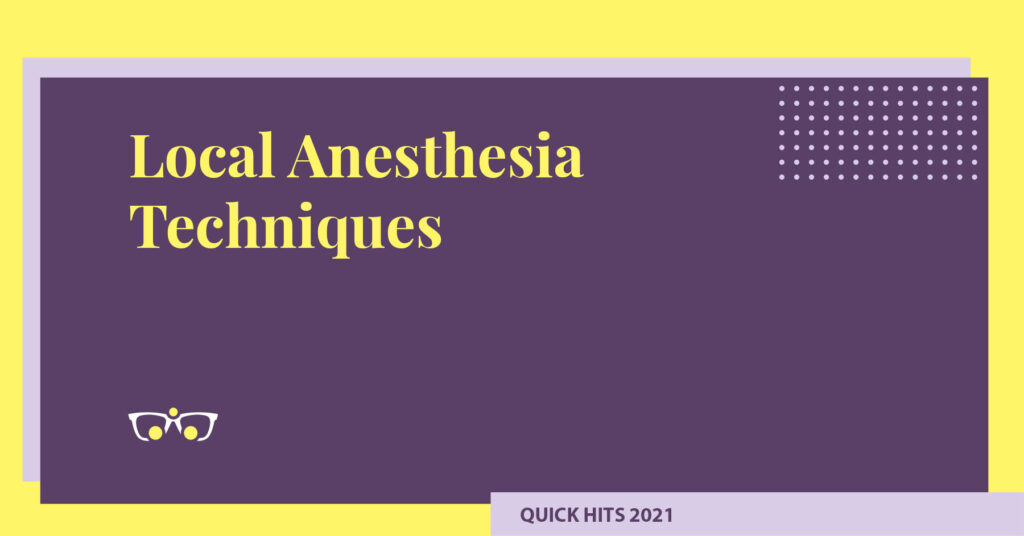- Anatomy
- Regions:
- Perineum: includes the area between the vagina and the anus in women and the area between the scrotum and the anus in men. Also described as the pelvic outlet- which is the are between the pubic symphysis and coccyx.
- Contains two fascial layers superficial and deep –> deep layer is continuous with colles fascia of the thigh
- Male: Penis: consists of root, body, and epithelium (glans penis)
- Penile Layers: Skin, dartos fascia, Bucks Fascia, and tunica albuginea
- Neurovascular Bundle: deep dorsal vein, dorsal artery and paired dorsal nerves of the penis
- Erectile tissue: paired corpora cavernosa and corpora spongiosum; urethra passes through corpus spongiosum and the meatus, ends at the tip of the glans penis
- Scrotum:
- Female: Vulva- includes mons pubis labia majoria, minora, clitoris, and vestibule
- Labia majora: skin, camper’s fascia, and colle’s fascia (continues with scarpa’s)
- Labia majora has inferior attachment on the ischiopubic rami that prevents the spred of hematomas and infections
- Labia minora: folds of skin without fat
- Clitoris: derived from undifferentiated phallus and has paired corpora, vestibular bulbs and glans
- Vagina: muscular tubular structure that extends from the vulva to the uterus –> opening located posterior to the urethra and is closed by the labia minora
- Length (typically) 6cm across anterior wall and 7.5cm across posterior wall; width 2.6-3.25cm
- Arterial supply:
- Internal pudendal artery (supplies perineum) from the internal iliac
- Perineal artery –> supplies perineum and scrotum/vulva
- Common penile artery: three branches (bulbourethral, dorsal, deep cavernosa)–> travels below Buck’s fascia and above the tunica albuginea (remember tunica albuginea envelops the corpus cavernosum)
- Superficial and deep external pudendal artery
- Branch off of the medial side of femoral artery
- Supplies skin of lower abdomen and anastomoses with the internal pudendal artery to supply the genitalia
- Testicular ovarian arteries: branch off aorta where gonads originate
- Uterine artery: supplies vagina
- Innervation:
- Pudendal nerve: (s2-4)–> follows course internal pudendal artery; perineal nerve (deep motor branch); dorsal nerve of penis/clitoris; posterior scrotal/labial nerves; inferior anal nerves
- Ilioinguinal nerve (L1): anterior scrotal/labial nerve –> root of penis/mons and upper part of scrotum/labium majora (innervate the anterior vulva)
- Congenital Defects
- Acquired
- Cancer, Trauma, Peyronie’s disease (correlates with dupuytren’s)
- Reconstruction considerations: high bacterial counts (second highest in body), avoiding wound contamination with stool and urine, pressure necrosis, high infection and dehiscence rates–> 66% dehiscence rate
- Chemoradiation (inflammation/ulceration), fibrotic changes
- Poor nutritional status
- Goal of reconstruction: to return to sexual activity (50% actual return)
- Classification of Defect: (cordeiro et al)
- Partial Type I
- Anterior or lateral wall (ia), posterior wall (ib)
- Circumferential II
- Upper 2/3 or total
- Treatment for vaginal defects:
- Singapore:
- First described as 15x6cm skin flap with medial incision in the thigh crease lateral to the hair bearing area, posterior flap at the posterior fourchette
- Arterial supply is posterior labial arteries (branches of pudendal artery)
- Sensation via posterior labial branches of the pudendal nerve
- Elevated in fasciocutaneous plane of the deep fascia of the thigh, directly over adductor muscles –> transposed 70 degrees. Donor site primarily closed
- Several variations
- Modified singapore flap
- Pudendal thigh flap or singapore flap based off of superficial perineal artery
- Superficial perineal nerve supplies sensation to flap for IMMEDIATE sensation post operatively
- Good for posterior vaginal reconstruction
- Used for Ia defects (unilateral or bilateral)
- Vertical rectus flap
- Most evidence for APR or LAR defects (large composite defects) s/p radiation
- Ib defects (posterior vaginal wall defects)
- Typically after colorectal cancer extending into the vaginal septum and can include vaginal wall and pelvic contents
- Brings healthy tissue into area without radiation
- Mathis and Nahai III; blood supply superior and deep inferior epigastric (based on deep inferior epigastric)
- Skin paddle designed paramedian, primary abdominal wall closure
- Iia (circumferential upper 2/3) may be reconstructed with rolled VRAM, usually after cervical or other gynecologic malignancies–> flap width usually 12-15cm
- Bilateral gracilis flap
- Good for total vaginal reconstruction with or without skin paddle
- Inconsistent sensation; reliable perforator
- Unilateral or bilateral
- Iib circumferential total defects use bilateral myocutaneous flaps (typically after total pelvic exonerations)
- Arterial supply medial femoral circumflex artery with secondary minor pedicles derived from the superficial femoral artery in a segmental fashion
- Identification: line drawn from pubic tubercle and semitendinous tendon (denotes anterior border of gracilis) –> pedicle will enter 7-10cm below the pubic tubercle in space between adductor longus and magnus
- Skin island may be as large as 6-20cm along the proximal 2/3 of muscle; make sure to design over adductor to include all of the perforators
- Vulvar reconstruction: typically from SCC or other types of skin cancer; lichen sclerosis, HPV
- Divided into upper third (mons and labia), middle third (labia proper), lower third (vaginal orifice and perineum)
- Upper third defects may be closed primarily, larger defects with pedicled ALT
- Pedicled ALT
- For large upper third vulvar defects, based on descending branch of the lateral circumflex artery (between vastus lateralis and medialis)
- Perforators found at midpoint between ASIS and patella, 5cm inferior and superior
- Dissection occurs with anterior incision first, the flap then transferred in subcutaneous plane
- May tunnel under rectus and sartorius to add pedicle length; muscle may be added if dead space is present
- Middle third defects:
- Singapore flap, gracilis, gluteal fold flaps
- Gracilis most typically used (great for cases with radiation)
- Lotus flap: modification of singapore flap uses superficial perineal artery perforators, design of lotus
- Lower third defects: (vaginal orifice or perianal)
- Gluteal fold flap: marked preoperatively with patient in standing position
- Flap located in triangle formed by ischial tuberosity, anus, and vaginal orifice or scrotum
- Skin flap elevated under fascia of gluteus maximus
- Based on internal pudendal perforators, may include posterior cutaneous nerve of the thigh if sensory component desired
- Treatment for Penile defects/reconstruction: typically after resection of lichen sclerosis, carcinoma of penis, neuroendocrine tumors
- Classified as partial or complete
- Radial forearm flap: gold standard for total penile phalloplasty and gender reaffirming surgery
- Innervated skin island- antebrachial cutaneous–> co-apted to the pudendal nerves or dorsal nerve to the penis
- Forearm skin for neourethra from a central urethral strip, is tubed over a 12-14 F silicone urinary catheter
- Free sensate osteocutaneous fibula flap
- Main advantage to fibula flap over RFFF is avoidance of prosthesis to provide erectile and sexual function
- Less conspicuous donor site
- Innervated skin island- via peroneal nerve
- Will need FTSG for neourethra- more likely to have urethral constriction
- Pedicled ALT
- Tube in tube technique with preservation of the lateral femoral cutaneous nerves
- Neophallus constructed while flap in thigh
- Scrotal Reconstruction: a quick word; in absence of prior radiation therapy, STSG typically used
- Superomedial thigh flaps with pouch
- Pedicled ALT
- Gracilis
- Tissue expansion
- Examples:
- Traumatic Amputation of Penis: attempt microvascular replantation –> keep on saline soaked gauze, place in sterile bag, place bag in slush –> order urinary diversion with suprapubic catheter, urethral anastomosis over foley, corporal body coaptation by approximating tunica albuginea, microsurgical anastomosis of dorsal vessels, nerves, skin closure
- Internal iliac –> internal pudendal artery –> deep dorsal penile arteries
- Fournier’s Gangrene
- Transgender: 1.4 million people currently identify as transgender
- Gender dysphoria: defined by DSM-5 as a person whose gender at birth is incongruent with their gender identity
- Preoperative assessment
- WPATH (world professional association for transgender health)
- ALL patients must have capacity for informed consent
- Age of consent is 18 years; F-M breast surgery can undergo if they have a consenting guardian, have lived in congruent identify for at least 1 year and have completed 1 year of testosterone therapy
- ALL patients must have a referral from a mental health professional that documents persistent gender dysphoria
- 1 referral required for chest reconstruction
- 2 referrals for patients seeking genital reconstruction
- Co-morbidities should be managed
- Hormone therapy not required for chest affirmation but is encouraged (12 months for male to female for aesthetic outcomes)
- Hormone therapy required for 12 months prior to any genital reconstruction surgery
- Patients must have lived for 12 months continuously in their gender role
| WPATH Requirements | Chest/Breast | Genital | Facial or other Gender affirmation surgery |
| Documented Referral of Gender Dysphoria from Mental Health Provider | 1 referral | 2 referrals | Not required |
| Capacity of informed Consent | Required | Required | Required |
| Age of Consent | >18* | >18 only | >18 or guardian consent |
| Hormone therapy | Not Required | Required 12 Continuous Months | Not Required |
| Living in Congruence with Gender Identity | Not Required | Required 12 Continuous Months | Not Required |
- Male to Female: largest portion of the transgender population
- Chest: Implant based breast aug most common MTF chest surgery
- Hormone therapy not required, estrogen recommended prior to surgery to allow for breast growth and improved results
- Fat grafting can be utilized
- Approach to operative management similar to cis patients
- Anatomy: male chest slightly wider
- Preference for incision and plane placement surgeon dependent
- Complications are similar (capsular contracture, hematoma, prosthesis rupture)
- Breast mammography screening every 2 years starting at 50 or 5-10 years after feminizing hormone
- Genital Reconstruction: goals are sexual sensation, functional vagina, acceptable cosmesis
- Penile inversion vaginoplasty is gold standard –> includes scrotal excision, high end ligation orchiectomy, dissection of the penis, creation of a neovagina in the pre-rectal space, creating neoclitoris utilizing the glans penis and neourethra anastomosis
- Neovaginal stenosis most common complication
- Patients may experience meatal stenosis or splayed urinary stream
- Need to undergo prostate screening even after surgery
- Female-to-Male Surgery:
- Chest: subcutaneous mastectomy performed for those that desire chest contour
- Goals include male contour, acceptable positioning of NAC and minimal scars
- Breast size and skin elasticity are most important factors when planning surgical incisions
- Small breasts or grade I ptosis: liposuction may be performed or transaereolar approach
- Medium breasts with moderate ptosis concentric or extended concentric design
- Large breasts or Grade III ptosis: mastectomy and free nipple graft best option
- Post chest reconstruction should continue cisgender female screening for breast cancer if no mastectomy or breast reduction performed\
- Genital: goals of reconstruction is to create an ideal neophallus that is aesthetically pleasing, has intact tactile and erogenous sensation, provides standing urination, imparts minimal donor site morbidity
- Metoidoplasty: involves creation of a neophallus from hypertrophied clitoris
- Clitoris is dissected with detachment of clitoral ligament and division of the urethral plate with urethroplasty to increase neophallus length
- Drawback is shorter neophallus (5-7cm)
- Pedicled phalloplasty with ALT: can be used for a “tube within a tube” flap design for neourethral formation
- Reliable vascular supply, discrete donor site
- Difficulties include thick subq layer that limits tube formation and need for prosthesis for erectile function
- Phalloplasty with RFFF: aesthetic neophallus with adequate length for standing urination
- Neurorrhaphy is antebrachial cutaneous and dorsal clitoral or ilioinguinal nerves (sensate)
- Donor site morbidity downside
- Urologic dysfunction including urethral strictures and fistulae are most common
- Most patients undergo TAHBSO prior to phalloplasty, still need cervical cancer screening after genital recon
| FtM Genital Reconstruction | Length | Standing Urination | Sensation | Donor Morbidity |
| Metoidoplasty | Poor | Difficult | Great | Minimal |
| Pedicled ALT Phalloplasty | Good | Yes | Poor | Minimal |
| RFFF Phalloplasty | Excellent | Excellent | Great | Significant |
References
- Coleman, E., et al. “The standards of care of the world professional association for transgender health, 7th version.” Int J Transgenderism 13 (2011): 165-232.
- James, S. E., Herman, J. L., Rankin, S., Keisling, M., Mottet, L., & Anafi, M. A. (2016). The report of the 2015 US transgender survey. Washington, DC: National Center for Transgender Equality.
- Weyers, S. et al. 2009. Long-term assessment of the physical, mental, and sexual health among transsexual women. The journal of sexual medicine. 6, 3 (Mar. 2009), 752–60.
- Claes, K. et al. 2018. Chest Surgery for Transgender and Gender Nonconforming Individuals.
- Monstrey, S. et al. 2008. Chest-wall contouring surgery in female-to-male transsexuals: a new algorithm. Plastic and reconstructive surgery. 121, 3 (Mar. 2008), 849–59.
- Buncamper, M. et al. 2016. Surgical Outcome after Penile Inversion Vaginoplasty. Plastic and Reconstructive Surgery. 138, 5 (2016), 999–1007.
- Morrison, S.D. et al. 2016. Phalloplasty: A Review of Techniques and Outcomes. Plastic and reconstructive surgery. 138, 3 (Sep. 2016), 594–615.
- Frey, J.D. et al. 2017. An Update on Genital Reconstruction Options for the Female-to-Male Transgender Patient: A Review of the Literature. Plastic and reconstructive surgery. 139, 3 (Mar. 2017), 728–737
- Massie, J.P. et al. 2018. Predictors of Patient Satisfaction and Postoperative Complications in Penile Inversion Vaginoplasty. Plastic and reconstructive surgery. 141, 6 (Jun. 2018), 911e–921e.







